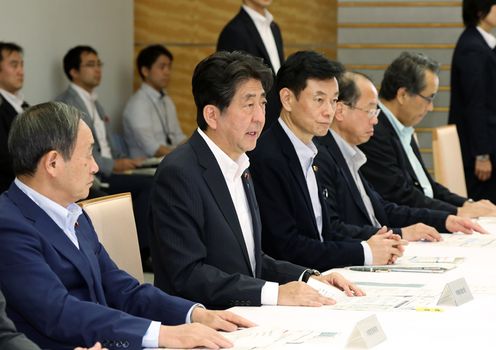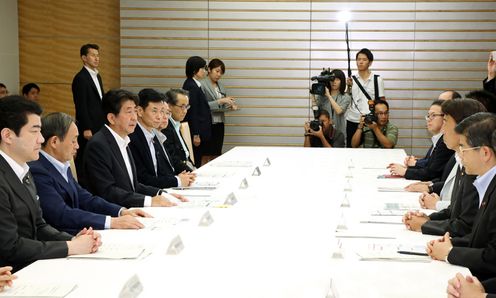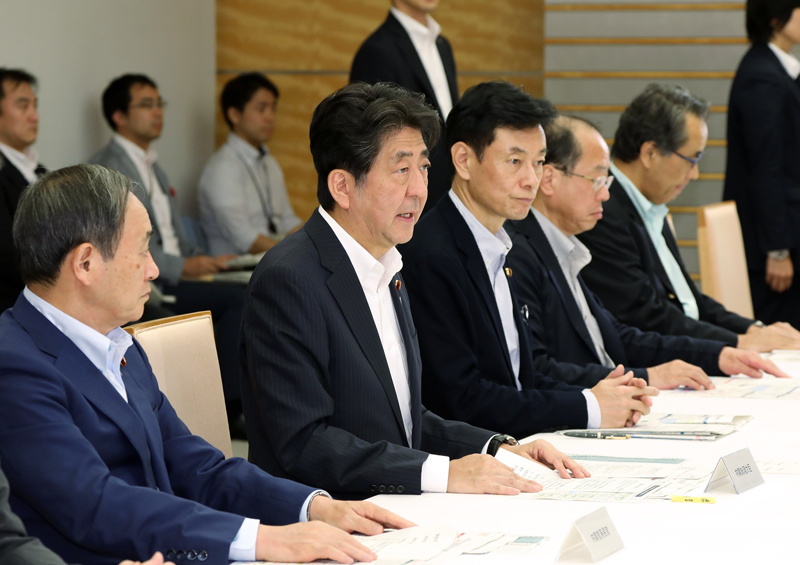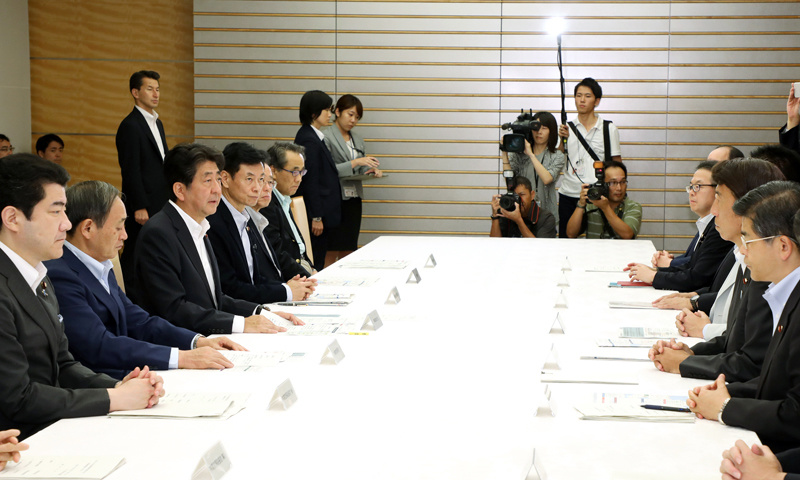Home > News > The Prime Minister in Action > September 2018 > Sixth Meeting of the Ministerial Council on the 2018 Hokkaido Eastern Iburi Earthquake
The Prime Minister in Action
Sixth Meeting of the Ministerial Council on the 2018 Hokkaido Eastern Iburi Earthquake
September 8, 2018

Photograph of the Prime Minister delivering an address (1)

Photograph of the Prime Minister delivering an address (2)
[Provisional Translation]
On September 8, 2018, Prime Minister Shinzo Abe held a meeting of the Ministerial Council on the 2018 Hokkaido Eastern Iburi Earthquake at the Prime Minister’s Office.
The Prime Minister said in his address,
“In the affected areas, units with approximately 41,000 personnel are exerting every effort even now to find and rescue the missing people as early as possible. Power supply has resumed across the whole of Hokkaido, except 7,000 homes, which are still experience power outage. Meanwhile, since it is expected that power supply remains tight, we have decided a series of electricity measures today in order to prevent the recurrence of large-scale power outages. I would like to ask the relevant ministries and agencies to implement the measures together.
Under the circumstance that more than 10,000 people are being forced to live at evacuation centers throughout Hokkaido, the Self-Defense Forces (SDF) are making every effort to carry out attentive operations to support their daily lives while being mindful of the affected people, including providing water supply assistance in 14 locations, food supply assistance in 13 locations, and bathing assistance in 4 locations.
With regard to push-mode food supports, 37,000 items of foods and drinks have arrived at distribution centers in Hokkaido, of which 22,000 items have been delivered to evacuation centers in nine municipalities in total, including Atsuma Town, Abira Town, and Mukawa Town. We will make continued efforts to ensure that the necessary foods reach the affected people.
With regard to housing, the Hokkaido Government has decided to provide 272 homes operated by the prefecture in the suburbs of the affected areas, including Tomakomai City, for the affected people. The Government will also coordinate with the affected municipalities to take swift measures to secure emergency housing, so that the affected people can take the first step towards rebuilding their lives at the earliest possible date.
Circumstances permitting, I will visit the affected areas tomorrow to see the extent of the damages with my own eyes, hear the voices of the affected people and local governments, so as to reflect them in our responses.
I would also like each of you to implement various measures in a swift and flexible manner, anticipating the needs on the ground based on real information through sending your staff to the affected areas.
In the areas affected by Typhoon No. 21*, such as Wakayama and Osaka Prefectures, while power restoration work has been under way day and night, over 40,000 homes are still without power due to the severe damages sustained, including fallen utility poles. We will increase the number of personnel engage in the work to 12,000 people to restore power as soon as possible and accelerate further the restoration work with the cooperation of power companies such as increasing equipment to repair utility poles, in addition to various emergency measures including distributing portable power generators.”
* Typhoon Jebi


